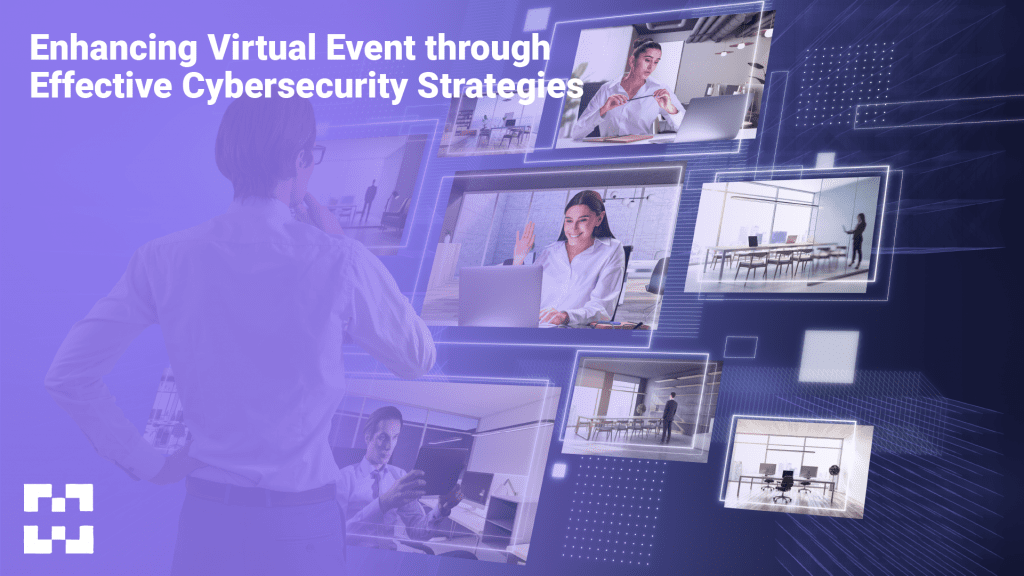
Discover essential cybersecurity strategies for effectively managing virtual events. Learn how to protect sensitive information, ensure data integrity, and create a secure virtual environment in this comprehensive guide.
In the era of virtual events, where online conferences, webinars, and meetings have become the norm, ensuring cybersecurity is paramount. As virtual events continue to grow in popularity, so does the risk of cyber threats and attacks. Event organizers and participants must prioritize cybersecurity to protect sensitive information, maintain data integrity, and provide a secure virtual environment. In this blog post, we will explore essential cybersecurity strategies that can help effectively manage virtual events and safeguard against potential threats.
Cybersecurity Strategies That Can Help Effectively Manage Virtual Events
1. Use Secure Virtual Event Platforms
Choosing a secure virtual event platform is the first step in ensuring cybersecurity. Look for platforms that prioritize data encryption, secure authentication processes, and regular security updates. Verify if the platform complies with industry standards and regulations, such as the General Data Protection Regulation (GDPR). A robust virtual event platform will provide features like access controls, secure meeting links, and attendee verification mechanisms, offering a secure foundation for your virtual events.
2. Implement Strong Password Policies
Encourage all participants, including organizers, speakers, and attendees, to create strong passwords for their accounts. Implement password complexity requirements, such as a combination of uppercase and lowercase letters, numbers, and special characters. Regularly remind participants to update their passwords and avoid reusing passwords across multiple platforms. Consider implementing multi-factor authentication (MFA) for added security, requiring an additional verification step, such as a code sent to a registered email or mobile device.
3. Educate Participants on Phishing Awareness
Phishing attacks remain a significant threat in the virtual landscape. Educate all participants about the dangers of phishing and provide guidelines to identify suspicious emails, links, or attachments. Encourage participants to scrutinize email senders, avoid clicking on unknown links, and report any suspicious activity. Remind participants to never share sensitive information through email or chat platforms unless using a secure channel.
4. Secure Network Infrastructure
Ensure that your network infrastructure is secure to prevent unauthorized access to virtual events. Use firewalls, intrusion detection systems (IDS), and secure virtual private networks (VPNs) to protect your network from external threats. Regularly update and patch software, including operating systems and applications, to fix security vulnerabilities. Encourage participants to use secure and private networks while attending virtual events, avoiding public Wi-Fi networks that may be susceptible to eavesdropping.
5. Regular Data Backups and Secure Storage
Regularly backup event data, including attendee information, session recordings, and presentation materials, to protect against data loss or ransomware attacks. Implement a secure backup system that stores data in encrypted and off-site locations. Use reliable cloud storage services that offer robust security measures and ensure compliance with data protection regulations.
6. Conduct Security Testing and Incident Response Planning
Regularly conduct security testing, including vulnerability assessments and penetration testing, to identify potential weaknesses in your virtual event infrastructure. Address any vulnerabilities promptly and establish an incident response plan that outlines steps to be taken in the event of a security breach. Assign roles and responsibilities, define communication channels, and train staff on incident response protocols.
7. Enable End-to-End Encryption
Ensure that your virtual event platform supports end-to-end encryption for all communication channels. End-to-end encryption encrypts data at the sender’s end and decrypts it only at the receiver’s end, making it inaccessible to unauthorized entities. This prevents eavesdropping and protects sensitive information shared during Virtual Events, such as private conversations or confidential documents.
8. Train Staff and Participants on Cybersecurity Best Practices
Organize cybersecurity awareness training sessions for staff and participants to educate them on best practices. Cover topics like password hygiene, safe browsing habits, avoiding suspicious downloads, and recognizing social engineering tactics. Promote a culture of cybersecurity awareness and vigilance among all stakeholders involved in virtual events.
9. Monitor and Control Access Permissions
Implement strict access controls and permissions to limit unauthorized access to virtual event platforms. Regularly review and update access privileges for organizers, speakers, and attendees. Utilize role-based access control (RBAC) mechanisms to ensure that individuals only have access to the information and functionalities necessary for their roles.
10. Regularly Update Software and Firmware
Keep all software, firmware, and virtual event platform components up to date with the latest security patches and updates. Regular updates address vulnerabilities and weaknesses that could be exploited by cybercriminals. Set up automatic updates whenever possible to ensure that security patches are applied promptly, reducing the risk of known vulnerabilities being exploited.
11. Secure File Sharing and Collaboration
When sharing files and collaborating during virtual events, use secure file-sharing platforms that offer encryption and access controls. Avoid sharing sensitive information through unsecured channels, such as public file-sharing services or unencrypted email attachments. Use secure document management systems that enable controlled access and track document versioning for enhanced data protection.
Conclusion
Cybersecurity must be a top priority in the virtual event landscape to protect sensitive information and maintain participants’ trust. By implementing secure virtual event platforms, enforcing strong password policies, educating participants on phishing awareness, securing network infrastructure, conducting regular data backups, and planning for incident response, event organizers can significantly reduce the risk of cyber threats.
You need to do lots of things to protect your virtual event, but if you don’t want to do all those things, then all you can do it to use a secured virtual event platform like HuddleXR. With these essential cybersecurity strategies in place, virtual events can be conducted confidently, ensuring safety and security.






